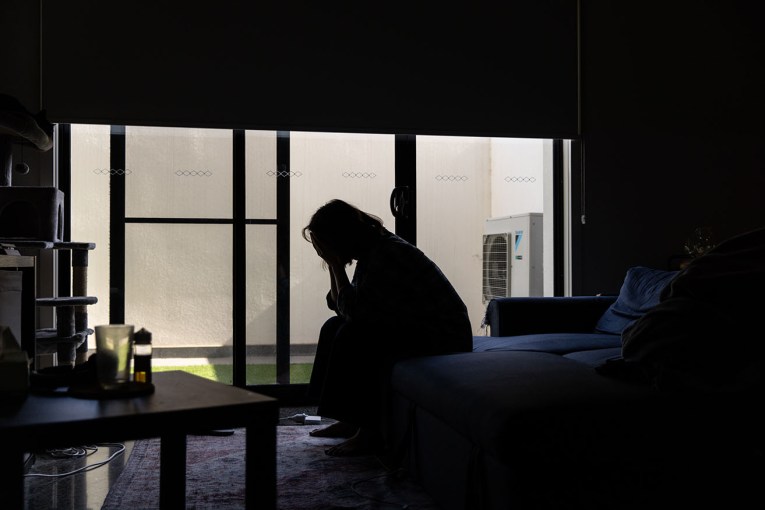The long-distance key to transforming your life

Robyn says the one-on-one video conference calls were a highlight of her master's course. Photo: Getty
We’ve all had them, those moments that changed your life – even though you might not have recognised them as such at the time. You miss one bus and find yourself sitting next to your future soulmate on the next – that sort of thing.
For Melbourne teacher Robyn Wilson, an English specialist, that life-changing moment came in the form of a broken heart.
That and a distance learning program.
“I’d broken up with a man I was crazy for and needed to do something – anything – to clear my head and, most of all, keep me away from the old haunts where we just kept running into each other,” she said.
“I’ve been a dancer all my life, but that wasn’t enough to fill the void, so I thought I might do something for my CV and my career.”

When dancing wasn’t enough of a distraction, Robyn immersed herself in distance learning program. Photo: Supplied
First stop was a local TAFE, where Robyn enrolled in a graduate certificate course, Teaching English to Speakers of Foreign Languages. After 20 years teaching Australian kids, she was keen to acquire the specialist knowledge and accredited competence in a more challenging field.
“I did really well, so well the instructor asked why I didn’t convert it into a master’s,” she said. “The big question though was just how to do it and where to enrol.”
There didn’t seem to be an easy answer, not at that point anyway. While already teaching full-time, Robyn was confronting an exploding crisis within her extended family – a time she recalls with shudder that says everything about the pressure and emotional strain.
When she finally had time to think, the answer was obvious: With four transferrable credits from the TAFE course, Robyn needed only another five to claim her master’s.
“The family issues I was dealing with were on-again/off-again 24/7 drains on my time, so I knew that whatever course I took up absolutely needed to mesh with what was going on in my life,” she said.
One, two or many
Charles Sturt University provided the answer. Its courses in teaching English as a second language were well regarded, and the preliminary research Robyn had done on the content and structure left her confident she would be able to pull it off.
“I could do one unit at a time, or two units, or I could go the whole hog and tackle the lot,” she said.
“I wasn’t alone either when I was making studies to fit into my lifestyle.
“One woman – I don’t know where she based – was a victim of domestic violence and living in her car. But she was still studying, giving herself a chance at new life with education and tech as its foundation.”
Robyn’s choice of Charles Sturt University’s campus in Bathurst, 780 kilometres from her home by Port Phillip Bay, exemplified the attraction so many students find irresistible: choice.
According to the Australian Institute for Teaching and School Leadership, which profiled the ever-expanding number of distance learners adding classroom qualifications to their initial degrees, 28 per cent of those students live in a different state or territory to where their institutions are based.

The percentages of distance education students enrolled outside their home states. Map: AITSL
As it turned out, Robyn’s flexibility was stretched to the limit when those family issues flared up again. With barely enough hours in the day to sleep, let alone study, she was forced to put her ambitions on the backburner for three long years.
When she did return to her studies, distance learning’s unique advantages came into their own. That doesn’t surprise Sydney University’s Dr Sayed Hadi Sadeghi, who was the author of an in-depth 2016 study comparing distant learning programs in the US and Australia.
Like Robyn, Dr Sadeghi’s interview subjects raved about the practical and lifestyle advantages of distance learning. Many considered it overwhelmingly preferable to the traditional classroom-and-lecturer model.
The ability to review lectures was never more than a few mouse clicks away – a “fantastic benefit”, enthused one US student. That view was echoed by others on both sides of the Pacific who saw online learning an advantage in itself.
Multimedia presentations were key.

Dr Sayed Hadi Sadeghi’s study confirmed that many students actually prefer distance learning. Photo: Sydney University
“All types of content in the online units are more interesting, compared with the traditional text-centred content contained in the units’ handbook,” an Australian student said.
“If we are looking for effective content in the e-learning, I think the best of them is multimedia as non-textual contents.”
Observations about the utility and appeal of multimedia presentations left Dr Sadeghi in no doubt “traditional formats” were limited by their nature.
“The results indicated that applying multimedia, such as modern new formats, is more attractive than online modules and texts, which are regarded as traditional formats of learning by participants,” he says.
That meshes with Robyn’s glowing appraisal, which owes much of its enthusiasm to the one-on-one video call sessions with lecturers.
“The online forums where all students are online at the same time with the lecturer, those were fair enough – most of the time but not always,” she said,
“They would be frustrating and annoying when just a few students dominated the session with stupid questions that were a waste of time for everyone else.”
“But the individual attention available to me, that more than made up for the little vexations, it was the trump card.”
These days, with her master’s hanging on the wall and closing in on a PhD, Robyn enjoys a double-edged satisfaction. There are the additional credentials, which have opened fresh employment opportunities she hasn’t hesitated to exploit, plus the satisfaction of helping new arrivals come to grips with their new homeland.

Robyn Wilson introduces a class to the mysteries of spoken English. Photo: Supplied
“It’s a case of doing well by doing good, I reckon,” she said.
“Every fresh course I teach begins with a room of people just off the plane and knowing virtually nothing of this peculiar language they need to master.
“When we’re finished, I’m looking at men and women who have the basic language skills to not just survive, but also to thrive.
“It’s a good feeling.”








